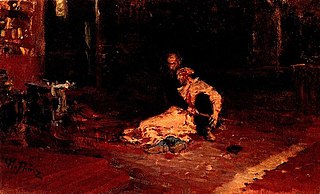α) Βορειοανατολικοί Καυκάσιοι ή Ναχονταγκεστανοί : Τσετσένοι , Ινγκουσέτιοι , Άβαροι ( καμιά σχέση με τους μεσαιωνικούς ), Λέζγκιοι κ.α.
β) Βορειοδυτικοί Καυκάσιοι ή Αμπχαζοαντιγκιανοί : Αμπάζιοι , Αμπχάζιοι , Κιρκάσιοι ( Τσερκέζοι ) κ.α.
γ) Νοτιοκαυκάσιοι ή Καρτβελιανοί : Σβαν , Γεωργιανοί , Μιγκρέλιοι , Λαζοί
Θα ασχοληθούμε με την τρίτη ομάδα. Οι Καρτβέλιοι διακρίνονται σε 3 ομάδες : α) Σβαν β) Γεωργιανούς γ) Ζάν(ν)ους ( Λαζούς , Μιγκρέλιους ).
Ας δούμε κάποια στοιχεία σχετικά με τα ονόματα.
Σβαν
Μάλλον ταυτίζονται με τους αρχαίους Σοάνες που αναφέρει ο Στράβων
Γεωργιανοί
Οι συνήθως αποκαλούμενοι Ίβηρες ( του Καυκάσου ).
Λαζοί
Σε μεσαιωνικές πηγές αναφέρονται και ως Τσάνοι ( όχι Τζάν(ν)οι ). Στον Αγαθία τον Σχολαστικό ( 6ος αι. ) αναφέρονται και ως Κόλχοι.
Μιγκρέλιοι
Οι Σβαν ονομάζουν Ζάνους τους Μιγκρέλιους.
Η γλωσσική συγγένεια Λαζών και Μιγκρελίων δείχνει πως κάποτε ήταν μια ενιαία ομάδα που διασπάστηκε. Όταν στις μεσαιωνικές πηγές βλέπουμε "Λαζούς" μπορεί να σημαίνει και Μιγκρέλιους.

Mε κίτρινο είναι οι Μιγκρέλιοι και με μπλε οι Λαζοί :

Τζάν(ν)οι
Αναφέρονται και ως Σάννοι ( Ζάνοι , Τσάνοι ). Όπως φαίνεται απ' το όνομα προφανώς σχετίζονται με τους Λαζούς ( Τσάνους ) και τους Μιγκρέλιους ( Ζάνους ). Κατά τον Στράβωνα και τον Στέφανο Βυζάντιο οι Σάννοι ( Τζάννοι ) ταυτίζονται με τους Μάκρωνες. Ο Πλίνιος όμως τους διακρίνει. Βλέπετε τον παρακάτω χάρτη που έχει την χώρα των Μακρώνων ( Μακρωνία ) κοντά στην Τραπεζούντα και στο Ρίζαιο ; Εκεί τοποθετούνται οι Τζάννοι. Δηλαδή ήταν δυτικότερα των Λαζών.

Εδώ φαίνονται ξεκάθαρα.
Τι απέγιναν αυτοί οι Τζάννοι και γιατί δεν αναφέρονται σήμερα όπως οι Λαζοί ως λαός ;
Η απάντηση είναι απλούστατη. Γιατί Λαζοί και Τζάννοι ήταν ο ίδιος λαός. Στις βυζαντινές πηγές γίνεται διάκριση Τζάνων και Λαζών με διαφορετικά ονόματα μόνο και μόνο γιατί ήταν διαφορετικές ομάδες . Όμως οι γεωργιανές πηγές αναφέρουν ως Τσάνους , δηλαδή Τζάνους , τους ίδιους τους Λαζούς. Οι Τζάνοι , Τσάνοι και Λαζοί των μεσαιωνικών και νεότερων πηγών είναι ο ίδιος λαός.
The first-century historians Memnon and Strabo remark in passing that the people formerly called Macrones bore in his day the name of Sanni, a claim supported also by Stephanus of Byzantium. The second-century historian Arrian notes that Tzanni, same as the Sanni are neighbours of the Colchians, while the latter were now referred to as the Lazi. By the mid-third century, the Lazi tribe came to dominate most of Colchis, establishing the kingdom of Lazica.
The warlike tribes of the Chaldia, called Tzanni, the ancestors of modern Laz people lived in Tzanica, the area located between the Byzantine and the Lazica. It included several settlements named: Athenae, Archabis and Apsarus; Tzanni were neither subjects of the Romans nor of the king of the Lazica, except that during the reign of the Byzantine emperor Justinian I (r. 527–565) they were subdued, Christianized and brought to central rule. Tzanni began to have closer contact with the Greeks and acquired various Hellenic cultural traits. The bishops of the Lazica appointed their priests, seeing they are Christians.
As the result of Muslim invasions, the ancient metropolis, Phasis, was lost and Trebizond became the new Metropolitan bishop of Lazica, since then the name Lazi appears the general Greek name for Tzanni.
According to Geography of Anania Shirakatsi of the 7th century, Colchis (Yeger in Armenian sources, same as Lazica) was subdivided into four small districts, one of them being Tzanica, that is Chaldia, and mentions Athinae, Rhizus and Trebizond among its cities. From the second half of the eight century the Trebizond area is referred to in Greek sources (namely of Epiphanius of Constantinople) as Lazica. The 10th-century Arab geographer Abul Feda regards city of Trebizond as being largely a Lazian port.
In 780, kingdom of Abkhazia incorporated the former territories of Lazica via a dynastic succession, thus ousting the Pontic Lazs (formerly known as Tzanni) from western Georgia; thereafter, the Tzanni lived under nominal Byzantine suzerainty in the theme of Chaldia, with its capital at Trebizond, governed by the native semi-autonomous rulers, like the Gabras family, of possibly "Greco-Laz" or simply Chaldian origin
https://en.wikipedia.org/wiki/History_of_the_Laz_people






.gif)


